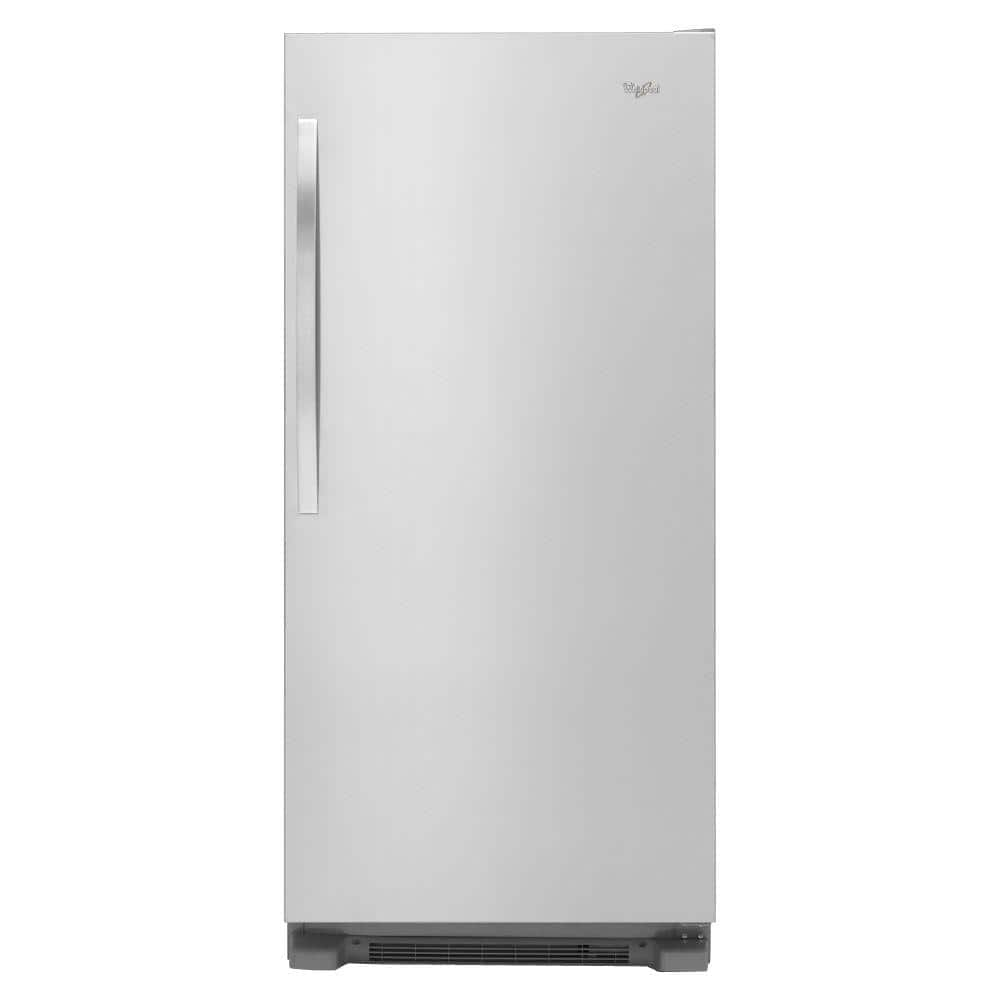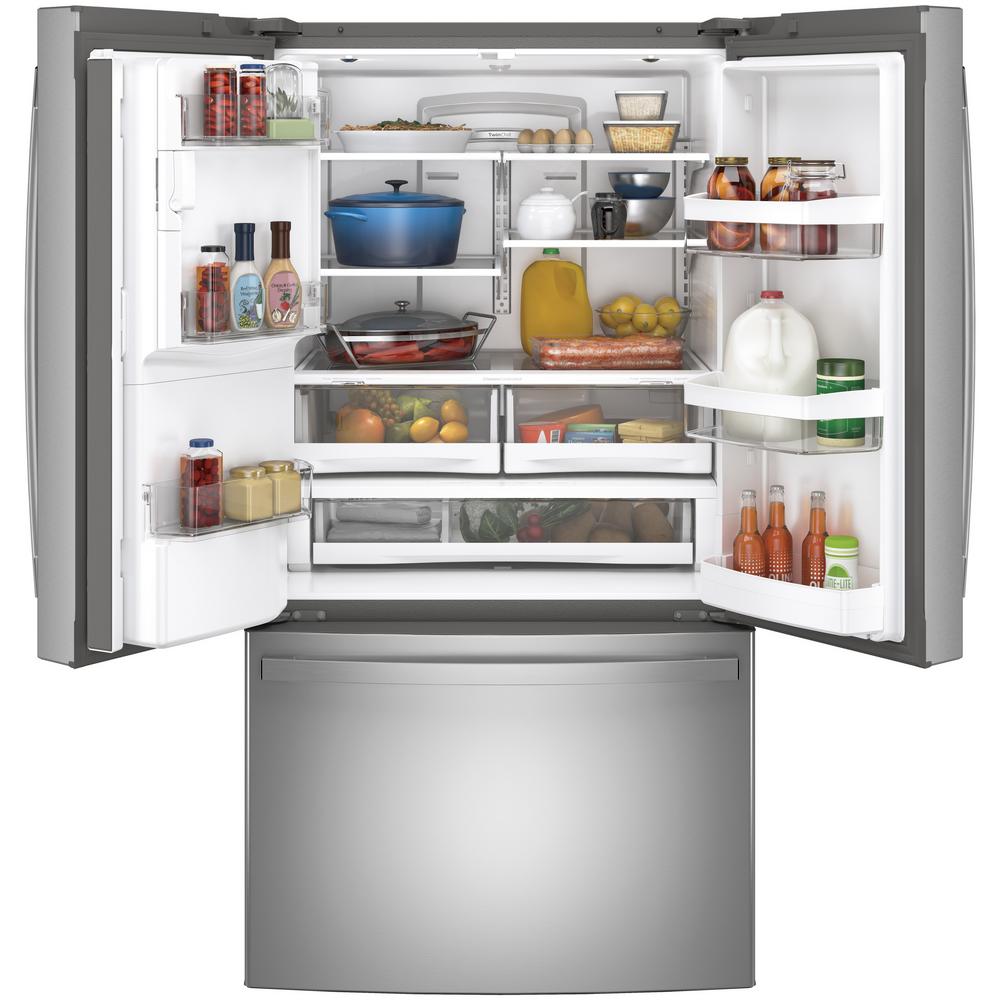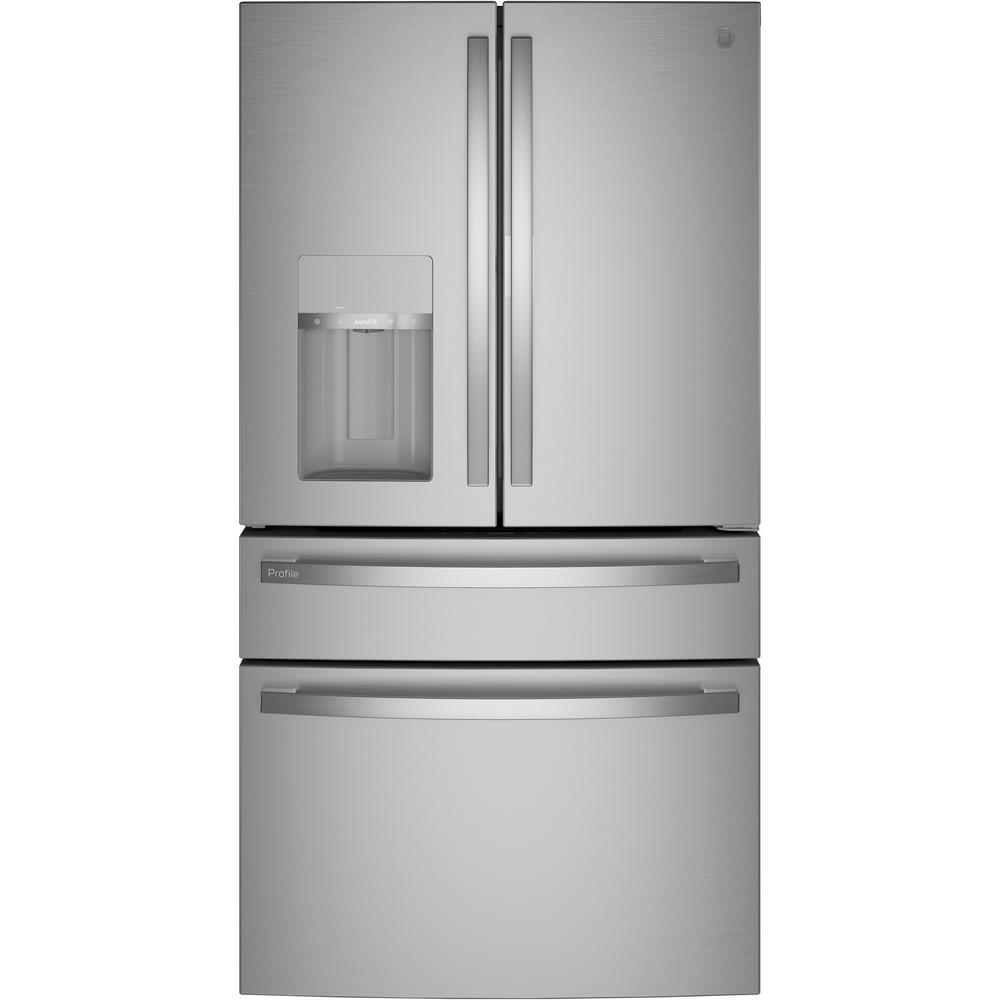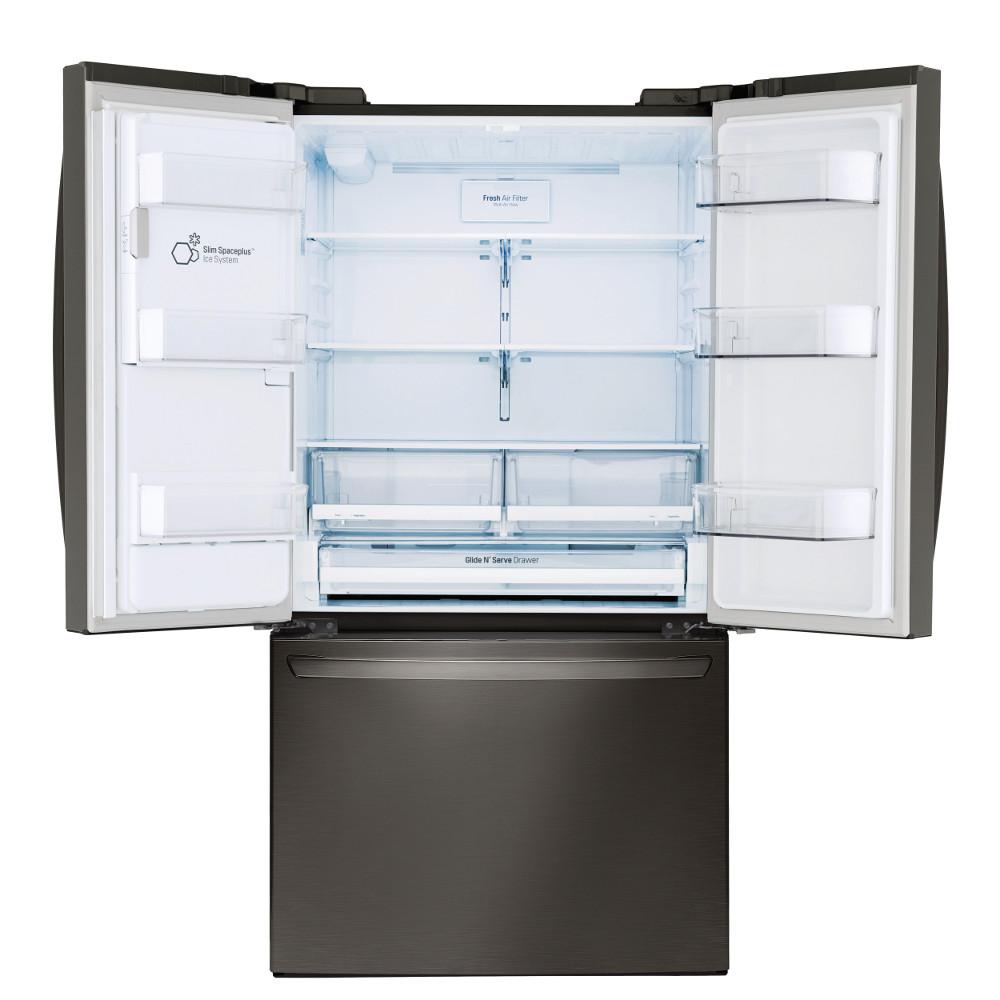Whirlpool 17.7 cu. ft. SideKicks Freezerless Refrigerator in Monochromatic Stainless Steel
Keep food looking like it should with LED interior lighting. Convenient, up-front electronic temperature controls. Temperature alarm helps monitor the ideal environment for food.
This All-Refrigerator offers all the space you could ever ask for. Enjoy this 18 cu. ft. refrigerator as a stand-alone unit or pair it with its matching Sidekicks all-freezer (model# WSZ57L18DM) for the complete look and a total of 36 cu. ft. of storage. Customization of this refrigerator is simple and easy with three adjustable glass shelves and three adjustable door bins. If you are in need of more storage space, this is the refrigerator for you.
- Electronic temperature controls are simple to use and evenly cool fresh items
- Automatic defrost feature ensures there will never be frost build-up, keeping your foods fresher longer
- Temperature alarm will give you a notification when the refrigerator temperature has gotten so high that it may compromise your fresh food items
- 5 total glass shelves, two fixed full-width and three adjustable full-width offer great functionality and opportunities for organization in this refrigerator
- 4 humidity-controlled drawers will allow you to personalize the temperatures for multiple types of fresh foods
- 6 total door bins, 1 dairy, 2 fixed full-width and 3 adjustable bins offer lots of space for the smaller items and keeps them organized
- 18 cu. ft. of capacity offers enough room for you to organize all of your fresh foods and still have space for your favorite snack trays or desserts
- In-door pizza pocket allows you to store a full large-size pizza easily and without taking up space needed for other items
- LED lighting in this refrigerator provides a bright and easy to navigate experience
- Designed, Engineered and Assembled in the U.S.A.
- 207202660
Additional information
| Depth (Excluding Handles) (in.) | 28.88 |
|---|---|
| Depth (Including Handles)) (in.) | 31.25 |
| Depth (Less Door) (in.) | 24.63 |
| Depth With Door Open 90 Degrees (In) | 55.75 |
| Height to Top of Door Hinge (in.) | 66.75 |
| Height to Top of Refrigerator (in.) | 66.25 |
| Product Depth x Height x Width(in.) | 31.25 x 66.25 x 30.25 |
| Refrigerator Width (In.) | 30 |
| Certifications and Listings | UL Listed |
| Manufacturer Warranty | 1 Year Limited |






by Mac
We replaced our old sidekicks fridge and freezer with this newer model. I do miss the extra storage shelf in the doors but overall am completely satisfied
by Diana
We bought this refrigerator to Keep our beverages out of our kitchen refrigerator. We love the refrigerator it has so much room and keeps the beverages cold. It was a little pricier than the white version they have but the white version was not available. Still worth the price.
by Jen
We are thankful we could still purchase this style of refrigerator when our Kenmore Elite could no longer be fixed. We plan to purchase the freezer soon to match the new refrigerator. We are satisfied with our purchase thus far.
by Bianca
Great storage and chills drinks quickly! Love it!
by Troyl
Works well as advertised. The shipping and delivery were great.